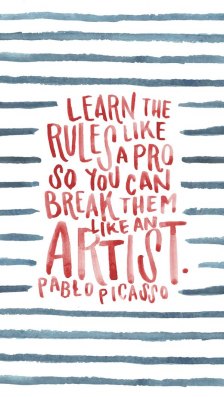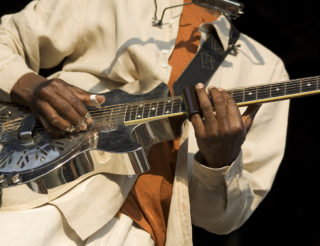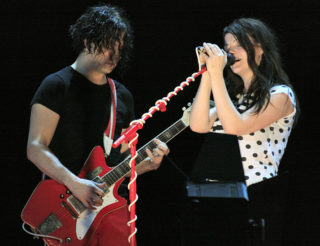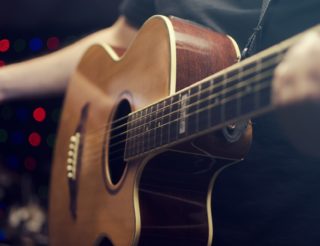Songwriting Tips for Beginners: The Art of Stealing
Author: Blake Baldwin

Table of Contents
Songwriter’s Paradise Part 2. The Art of Stealing
Hey! Thanks for keeping up with my series “Songwriter’s Paradise”. If you missed the introductory post, here it is: “Part 1. Exploration” . In this next section I’m going to go a bit more in depth with the ideas I shared in the last post, especially when it comes to the idea of “borrowing” things from other musicians/composers.
Good artists borrow. Great artists steal
This quote has been said in various forms by many people and considering I’ve seen this adage delivered by such legends as T.S Elliot, Igor Stravinsky, Pablo Picasso, and Steve Jobs, I would say we should seriously consider its weight.
Music does not happen in a vacuum. Meaning, while you can come up with great ideas on your own, if you hadn’t been influenced by the wide variety of music you’ve no doubt heard while living your life, even if it’s in passing, you’d likely come up with nothing at all.
The idea behind this is in all music and art there is a lineage and more importantly a language; a history of ideas that are sparked, churned, recycled, reused, and regurgitated from artist to artist. And guess what? They are ours for the taking.
Want some specific examples?
This video features of one of my favorite bands, Lake Street Dive, conducting a songwriting master class at the New England Conservatory. While the whole master class is great, take note of the discussion and workshop that begins at 4:30. They start talking about the concept of stealing ideas from other artists almost immediately, even calling their song “You Go Down Smooth” a rip off of the Beatles tune “Got To Get You Into My Life”. They even made an exercise out of it (hint, hint)! Check out the songs via the links below and see if you can hear the similarities for yourself.
You Go Down Smooth:
Got To Get You Into My Life:
Lake Street Dive’s master class is great for multiple reasons. Mostly, I love how candid they are about their process. However, the main reason I’m using this example is to show how an artist will use the language of another artist and after a little manipulation and change of context; you’ve got yourself something new! Or if not totally new, at least you’ve got something that could work.
What are Musical Devices?
The guitarist Mike Olson uses the term “devices” when referring to the little chunks (the descending bass line thing and similar style of chord progression) of the Beatles song that he ripped off and is now using in the Lake Street Dive tune. I love referring to these little musical ideas with the term devices because it’s so nonchalant, as if they could be easily replaced with some other device. That’s probably because they easily could.
Musical devices are tiny musical ideas and motifs that create the feeling or movement of a piece or section of music.
Really that’s all devices are: tiny musical ideas and motifs that create the feeling or movement of a piece or section of music. When discussing music there are plenty of terms available to describe rhythm and melody but using the term device is great because it refers to both simultaneously.
If you remember back to my first post, I mentioned learning songs not for the sake of inspiration, but because it expands your toolbox. What you’re gathering for your toolbox are these devices. You could almost imagine them being like the little gears in a watch. As you’re building your songs you will dig into the well of your knowledge and pull out these devices to make the songs rotate and work just the way you imagine them working.
To put it another way, what you’re doing when using devices is using the musical language that you’ve gathered from other songwriters and composers.
Songwriting Exercise # 1
Write a song that uses a descending bass line
Ok guys, so here is the first real exercise of the series. Start writing a song that utilizes a descending bass line in one or more of its parts. It could be the main verse section, it could be a pre-chorus, verse, the main riff, or whatever you’d like. Just make sure it is an integral part of the song and not just connective tissue between sections.
Here Are Two Examples:
“Dazed and Confused” by Led Zeppelin
https://www.youtube.com/watch?v=ehwSEVbBZl4
This classic song by rock ‘n’ roll legends Led Zeppelin is a perfect example of using a descending bass line as a riff that carries through main parts of the song. It’s especially cool because the underlying harmony of it all does not matter; no chords are really ever implied while the descending chromatic blues riff is happening, allowing Robert Plant to really go for it.
“Where Is My Mind” (The Pixies) by Nada Surf
If you’re familiar with The Pixies’ version of this song, then this is a particularly cool example because of what Nada Surf does with the final verse of the song; you can hear it after the guitar solo break. Instead of continuing on with the same chord progression from the original, Nada Surf changed it to a descending bass line starting in the relative minor key. For even more dramatic effect, they made a chromatic descending line with all the harmonizations happening in the upper parts of the guitar chords. (If we’re in the key of E Major/C# Minor the bass line would be C# – B# – B – Bb instead of the diatonic version which would be C# – B – A – G#).
As part of this process, search your musical library and find as many examples of this as possible. You’ll be surprised how many artists have used this device!
3 Songwriting Tips to Ignite the Creative Process:
1. Start writing down some devices of your own.
Either ones you’ve used or from any of the songs you’ve been learning. Examples could be a chorus with an ascending bass line or a verse section that has little to no harmony. There are countless possibilities of course, but this is meant to get the gears turning and force us to put into words the things happening musically that are catching our ears or propelling a song forward.
2. Start recording everything.
This is not something I’ve mentioned so far but the best thing you can do is record all your ideas. A little melody that comes to you in the car? Record it on your smartphone (my voice memos section is a disaster). A few lyrics or something? Jot them down. Little guitar diddy? Use your laptop camera. Whatever. The point of this is to start documenting your ideas so you can use them later and examine what it is you’re doing.
3. Start writing and keep the judgement totally out of it.
Songwriting is a practice and is something that you must keep doing all the time to get better at it. Not everything you write will be awesome. Be okay with that. Not everything that comes out will be a full song, maybe just little chunks. Be okay with that. Not everything you write will fit into the genre that you had in mind when you started. Be okay with that too. Whatever it is that’s coming out of you, at any stage, embrace your progress and move on: it can only get better from there.
In my next post, I will be diving straight into more devices with songwriting exercises.
Part 3 of this series is coming soon!
Hopefully you’ve liked this post, be sure to check back soon for my next installment! If you’re interested in learning how to write your own original songs, stick around because there’s plenty more to come.









I would like information on beginning songwriting.
THANK YOU
Nice article but experience is a must in songwriting…..
These guys helped me “www fiverr com/eric1717/help-you-with-your-song”
I would like to learn how to write a song
Hipster how to write a song guide.
Oh my goodness! an amazing article dude. Thank you Nevertheless I’m experiencing issue with ur rss . Don’t know why Unable to subscribe to it. Is there anyone getting an identical rss problem? Anybody who knows kindly respond. Thnkx